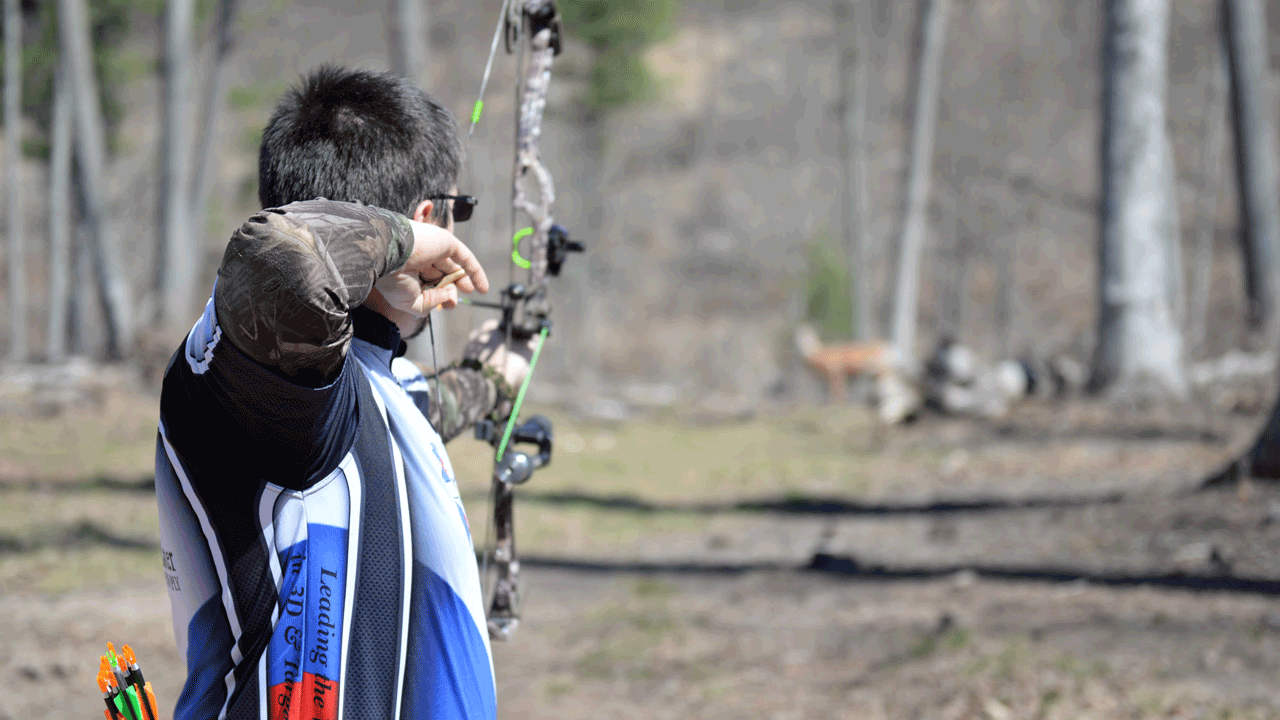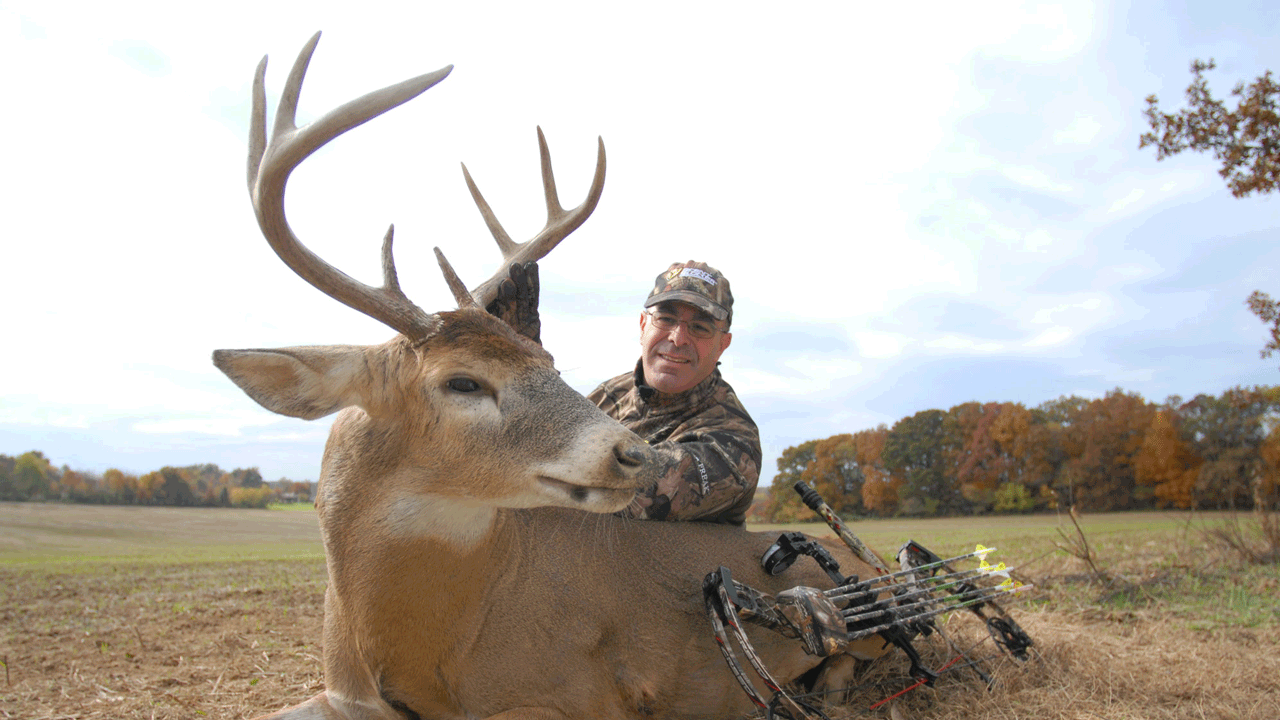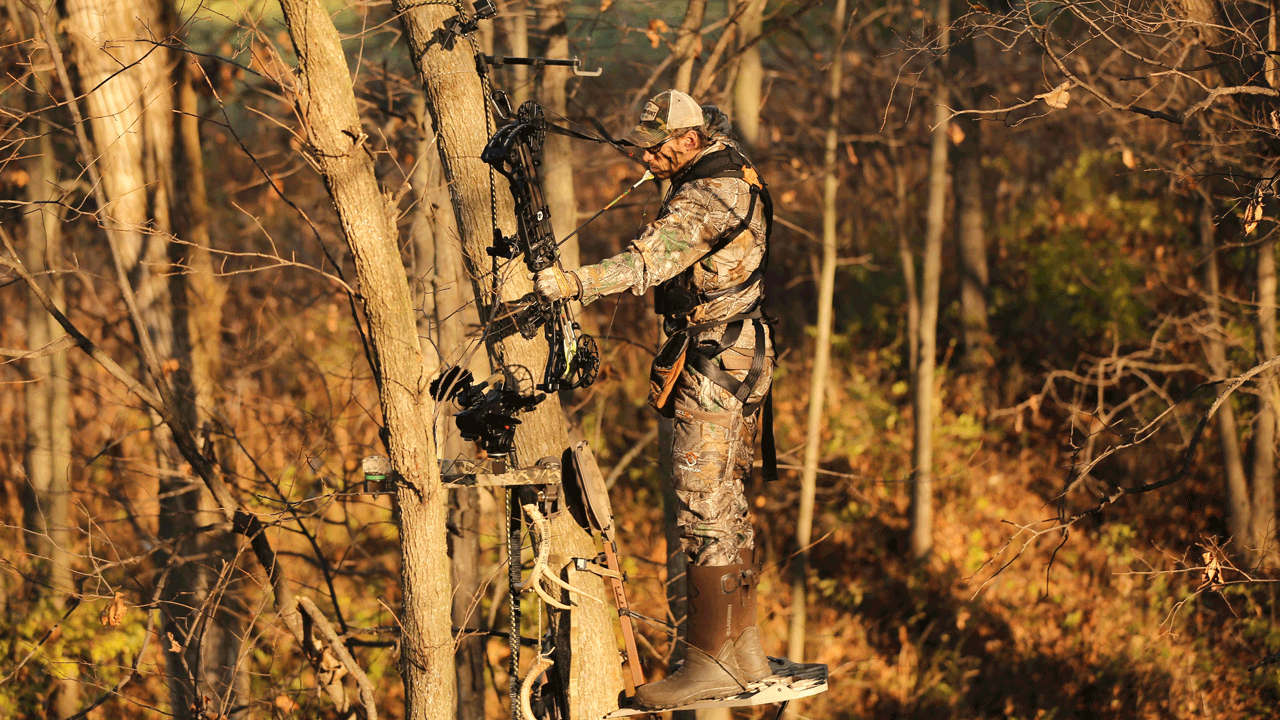Walk up and down the line at any big-time archery tournament, and undoubtedly you will see most compound archers using hinge, aka back-tension, releases. This isn’t a coincidence. A majority of the most precise compound archers in the world have decided that back-tension releases are the best at helping them reach the pinnacle of accuracy. But what about a back tension release for hunting?
If they’re good for drilling penny-sized dots at 20 yards 60 times in a row, or for winning $55,000 shooting at 3-D targets out to 80 yards, then back tensions have to be a good choice for bowhunters, right? I mean, we want to be as accurate as we can be too.

One of the biggest differences between bowhunting and target shooting is the target archer doesn’t have to worry about the target suddenly moving in the middle of the shot process.
If you’re thinking about ditching the index-finger or thumb trigger release in favor of a back tension release for hunting, there are some things you’ll want to consider.
For starters, yes, you most certainly can use a back tension for hunting. It will release your bowstring to launch an arrow at a game animal. And it will do so with the utmost accuracy. There’s no question there.
One of the benefits target archers see in back-tension releases is they do a better job of producing a surprise shot. When using a trigger, you know exactly when it’s going to fire. Because of that, it’s easy to anticipate the shot, and then flinch. In tournament archery, a flinch can cost you big time.
The surprise shot beats your body’s desire to react to a shot. Flinching is a natural reaction to the “explosion” of a bowstring being released in your hands. If the bow goes off before you can anticipate it, then the arrow is gone before you can flinch.
As long as a target archer is holding steady on an aiming point, then it doesn’t really matter when the release fires in a surprise shot. Since his body won’t have time to affect the shot, the arrow should hit the bull’s eye.
The chief difference between bowhunting and target archery, however, is that the bowhunter’s target can move at any time, without prior warning. So imagine you draw back on a big buck with your back-tension release. You come to anchor and settle in to start the shot process. Your sight pin locks on the spot you want to hit in the deer’s vitals and your back muscles start flexing, causing your release hand to pull backwards, which causes the release to rotate.
Just before the release fires, the deer suddenly takes a step. What do you do? Can you stop the shot and regroup? Have you passed the point of no return with the release?
Using a back-tension release properly, you give up a bit of control. You don’t have that absolute knowledge when the release will fire.

Used properly, a back tension release can help produce tack-driving accuracy for the bowhunter.
With a trigger release, nothing happens until you depress the trigger. You can stop or start a shot at any time before you depress the trigger. To be sure, it is possible to make a back-tension release fire on command. You can just rotate your release hand backwards, essentially making the handle a big trigger. The release will fire when you rotate the handle.
Typically, however, that requires a lot more movement than simply squeezing your index finger or thumb to activate an actual trigger. So that certainly is not the most effective way to use a back-tension release.
Some other factors to consider are wind and extreme angles if you’re hunting from a tree stand or in rugged country. Proper use of a back-tension release takes time when you hit full draw. It’s not an instant shot.
Wind can interrupt the shot process by pushing your pin off your aiming spot before you release. Outdoor target archers obviously deal with wind, and they are able to adjust, possibly by letting down their bow to wait for a gust to pass.
Will you have time to do that in a hunting situation? Will that extra movement catch the eye of a wary game animal and cause it to spook? Do you want to take that chance?
Extreme shooting angles change the pressures on your bow arm and release hand. If you aren’t ready for that change, it can cause your back-tension release to fire before you are ready, or it can make it seem like it won’t go off at all. And here’s something I learned the hard way, but back-tension releases work best in a relaxed hand. For me, that was easy to produce on the target range, but when a whitetail was within bow range, my release hand tensed up like a rock. Adrenaline was flowing so fast and furious, I couldn’t relax my hand. Let’s just say things did not go well.

The shot angles bowhunters often face can make using a back tension release more difficult.
I realize I’m painting a pretty negative picture here of using a back tension release for hunting. That’s because many bowhunters definitely will benefit from having more control over their shot using a trigger release, rather than a back tension.
Regardless, there are many, many bowhunters who successfully use back-tension releases in the woods. They have learned how to react to the situations I’ve described, and they prefer the improved accuracy they know they can count on by using their back tensions.
Perhaps one of the biggest benefits of using a back tension release for hunting is you really can’t rush the shot. Even if you roll your hand through the release to get it to go off, that’s not as immediate as slamming the trigger on an index finger release. And if you activate it properly – through back tension – then there’s no question about the shot quality. Just by the way it functions, a back tension release forces you to slow down.
But to use a back tension release for hunting, you have to be totally comfortable with it. If you hunt a lot and shoot a lot of game animals, you can learn to use a back-tension release for hunting. If you shoot at a lot of targets all year long with a back-tension release, and holding one is like an extension of your hand, you probably will have better control of it than someone else.
I guess the best advice would be to say that, if you want to commit to using a back-tension release for hunting, then commit to it 100 percent. Shoot your rig a ton with that release so it becomes second nature. You’re going to need that familiarity to help you when the moment of truth comes in the woods. Especially on that first animal.

 By
By 



